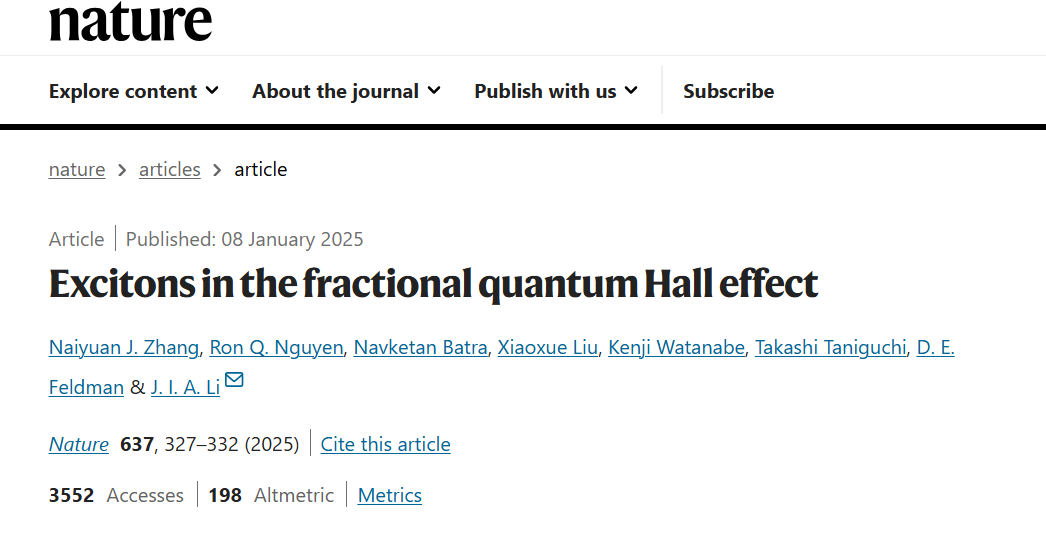衍射图案完全相同?如果电子衍射的两个实验在完全相同条件下进行,随机同时停止实验
-
forecasting楼主
- 著名点评

- 帖子互动: 371
- 帖子: 4490
- 注册时间: 2023年 4月 17日 08:26
#1 衍射图案完全相同?如果电子衍射的两个实验在完全相同条件下进行,随机同时停止实验
假如电子衍射的两个实验在完全相同条件下进行,随机同时停止实验,结果都完全一致吗?即衍射图案完全相同?
干涉实验呢?
有无人就这个问题做过这样的对比实验?即对比两个相同实验所得衍射图案和干涉图案是否完全一致?纠缠的两电子流分别单个射向等距的两完全相同的衍射孔(对称衍射设备),其后形成的图案完全相同或对称吗?当两个纠缠的电子分别射向两个等距的完全相同的衍射孔时,所形成的衍射图案通常是对称的。
但是有上文所提对比实验证实其图案不同(大量衍射粒子之后统计上近似相同)吗?
干涉实验呢?
有无人就这个问题做过这样的对比实验?即对比两个相同实验所得衍射图案和干涉图案是否完全一致?纠缠的两电子流分别单个射向等距的两完全相同的衍射孔(对称衍射设备),其后形成的图案完全相同或对称吗?当两个纠缠的电子分别射向两个等距的完全相同的衍射孔时,所形成的衍射图案通常是对称的。
但是有上文所提对比实验证实其图案不同(大量衍射粒子之后统计上近似相同)吗?
+10.00 积分 [版主 verdelite 发放的奖励]发原创帖奖励
标签/Tags:
#3 Re: 衍射图案完全相同?如果电子衍射的两个实验在完全相同条件下进行,随机同时停止实验
每个电子都随机出现,怎么条件相同?forecasting 写了: 2025年 1月 16日 20:49 假如电子衍射的两个实验在完全相同条件下进行,随机同时停止实验,结果都完全一致吗?即衍射图案完全相同?
干涉实验呢?
有无人就这个问题做过这样的对比实验?即对比两个相同实验所得衍射图案和干涉图案是否完全一致?纠缠的两电子流分别单个射向等距的两完全相同的衍射孔(对称衍射设备),其后形成的图案完全相同或对称吗?当两个纠缠的电子分别射向两个等距的完全相同的衍射孔时,所形成的衍射图案通常是对称的。
但是有上文所提对比实验证实其图案不同(大量衍射粒子之后统计上近似相同)吗?
拿钱发帖带节奏的死全家
#4 Re: 衍射图案完全相同?如果电子衍射的两个实验在完全相同条件下进行,随机同时停止实验
条件一样,肯定结果一样。不一样不就没法预测了吗?不然物理有何意义。物理事件不但同时发生结果是一样,而且在空间平移,时空旋转的变化下还是一样的。就是说观测者换了时间地点,同样条件的实验结果还是一样。
#5 Re: 衍射图案完全相同?如果电子衍射的两个实验在完全相同条件下进行,随机同时停止实验
衍射图必须在大量取样观测以后才会相同。因为出来的电子处于几率状态,每次取样都是一次物理测量,只是几率状态的一个点。取样不多没法显示几率分布。但是在取样之前电子几率状态是完全一样的。
#6 Re: 衍射图案完全相同?如果电子衍射的两个实验在完全相同条件下进行,随机同时停止实验
这个问题可以和布朗的某教授讨论,他的实验发现电子是可以有分数衍射的 - 1/3 2/3那种, 实验正在进行中
-
forecasting楼主
- 著名点评

- 帖子互动: 371
- 帖子: 4490
- 注册时间: 2023年 4月 17日 08:26
#7 Re: 衍射图案完全相同?如果电子衍射的两个实验在完全相同条件下进行,随机同时停止实验
knockwood 写了: 2025年 1月 16日 23:25 衍射图必须在大量取样观测以后才会相同。因为出来的电子处于几率状态,每次取样都是一次物理测量,只是几率状态的一个点。取样不多没法显示几率分布。但是在取样之前电子几率状态是完全一样的。
其实你这两个回答矛盾。上面的那个回答是一般人的想法,不确定是否能从理论里推出,实验又如何knockwood 写了: 2025年 1月 16日 23:08 条件一样,肯定结果一样。不一样不就没法预测了吗?不然物理有何意义。物理事件不但同时发生结果是一样,而且在空间平移,时空旋转的变化下还是一样的。就是说观测者换了时间地点,同样条件的实验结果还是一样。
-
forecasting楼主
- 著名点评

- 帖子互动: 371
- 帖子: 4490
- 注册时间: 2023年 4月 17日 08:26
-
forecasting楼主
- 著名点评

- 帖子互动: 371
- 帖子: 4490
- 注册时间: 2023年 4月 17日 08:26
-
huangchong(净坛使者)

- 论坛元老

2023-24年度优秀版主 - 帖子互动: 4262
- 帖子: 62493
- 注册时间: 2022年 7月 22日 01:22
#10 Re: 衍射图案完全相同?如果电子衍射的两个实验在完全相同条件下进行,随机同时停止实验
no. you will have different shot noise on each camera.
https://en.wikipedia.org/wiki/Shot_noise
https://en.wikipedia.org/wiki/Shot_noise
#11 Re: 衍射图案完全相同?如果电子衍射的两个实验在完全相同条件下进行,随机同时停止实验
可以email 以下两位 -其中一位是炸药奖得主,也是攀岩界的神
j_kosterlitz@brown.edu
kuehne@brown.edu
如果认为华人比较好交流,那么这位 jia_li@brown.edu
正在具体做fractional excitons的课题
In the fractional quantum Hall effect, these steps become even more peculiar, increasing by only fractional amounts — carrying a fraction of an electron's charge.
+5.00 积分 [用户 TheMatrix 给您的打赏]
上次由 redot 在 2025年 1月 17日 06:52 修改。
-
forecasting楼主
- 著名点评

- 帖子互动: 371
- 帖子: 4490
- 注册时间: 2023年 4月 17日 08:26
-
forecasting楼主
- 著名点评

- 帖子互动: 371
- 帖子: 4490
- 注册时间: 2023年 4月 17日 08:26
#13 Re: 衍射图案完全相同?如果电子衍射的两个实验在完全相同条件下进行,随机同时停止实验
谢谢redot 写了: 2025年 1月 17日 06:44 可以email 以下两位 -其中一位是炸药奖得主,也是攀岩界的神
j_kosterlitz@brown.edu
kuehne@brown.edu
-
forecasting楼主
- 著名点评

- 帖子互动: 371
- 帖子: 4490
- 注册时间: 2023年 4月 17日 08:26
 #14 Re: 衍射图案完全相同?如果电子衍射的两个实验在完全相同条件下进行,随机同时停止实验
#14 Re: 衍射图案完全相同?如果电子衍射的两个实验在完全相同条件下进行,随机同时停止实验
你再仔细想一想,我问的是啥问题。huangchong 写了: 2025年 1月 17日 06:11 no. you will have different shot noise on each camera.
https://en.wikipedia.org/wiki/Shot_noise
-
forecasting楼主
- 著名点评

- 帖子互动: 371
- 帖子: 4490
- 注册时间: 2023年 4月 17日 08:26
#15 Re: 衍射图案完全相同?如果电子衍射的两个实验在完全相同条件下进行,随机同时停止实验
第一个年已81。第二,第三吧redot 写了: 2025年 1月 17日 06:44 可以email 以下两位 -其中一位是炸药奖得主,也是攀岩界的神
j_kosterlitz@brown.edu
kuehne@brown.edu
如果认为华人比较好交流,那么这位 jia_li@brown.edu
正在具体做fractional excitons的课题
In the fractional quantum Hall effect, these steps become even more peculiar, increasing by only fractional amounts — carrying a fraction of an electron's charge.
再次感谢
-
forecasting楼主
- 著名点评

- 帖子互动: 371
- 帖子: 4490
- 注册时间: 2023年 4月 17日 08:26
-
TheMatrix

- 论坛元老

2024年度优秀版主
TheMatrix 的博客 - 帖子互动: 296
- 帖子: 13973
- 注册时间: 2022年 7月 26日 00:35
#18 Re: 衍射图案完全相同?如果电子衍射的两个实验在完全相同条件下进行,随机同时停止实验
viewtopic.php?t=686694redot 写了: 2025年 1月 17日 06:44 可以email 以下两位 -其中一位是炸药奖得主,也是攀岩界的神
j_kosterlitz@brown.edu
kuehne@brown.edu
如果认为华人比较好交流,那么这位 jia_li@brown.edu
正在具体做fractional excitons的课题
In the fractional quantum Hall effect, these steps become even more peculiar, increasing by only fractional amounts — carrying a fraction of an electron's charge.
https://arxiv.org/pdf/2407.18224

Abstract
Excitons, Coulomb-driven bound states of electrons and holes, are typically composed of integer charges1,2. However, in bilayer systems influenced by charge fractionalization3,4, a more interesting form of interlayer exciton can emerge, in which pairing occurs between constituents that carry fractional charges. Despite numerous theoretical predictions for these fractional excitons5,6,7,8,9,10,11,12,13,14,15,16, their experimental observation has remained unexplored. Here we report transport signatures of excitonic pairing in fractional quantum Hall effect states. By probing the composition of these excitons and their impact on the underlying wavefunction, we discover two new types of quantum phases of matter. One of these can be viewed as the fractional counterpart of the exciton condensate at a total filling of 1, whereas the other involves a more unusual type of exciton that obeys non-bosonic quantum statistics, challenging the standard model of bosonic excitons.
#19 Re: 衍射图案完全相同?如果电子衍射的两个实验在完全相同条件下进行,随机同时停止实验
没有矛盾。几率态是完全一样的, 观测时候是需要取样的。从量子力学角度肯定是这样的。
shot noise,
https://physics.stackexchange.com/quest ... -in-optics
There are many explanations to be found about shot noise in optics, but the answers I find are incompatible. There are three ways shot noise in optics is explained.
It is the noise purely arising form (vacuum) fluctuations of the EM-field. For example, the book of Gerry and Knight states that "In an actual experiment, the signal beam is first blocked in order to obtain the shot-noise level." I guess the number of photons you would detect in this way follows a Poissonian distribution, hence the name `shot noise'. (For context, see screenshot of relevant section below - courtesy of Google Books)
It is due to 'the particle nature of light'. Semi-classically, a low intensity laser beam will emit photons following a Poisson distribution. If the beam is incident on a photon detector, this detector will receive a fluctuating number of photons per time bin (according to the Poissonian). Thus the intensity (~number of photons per time bin) will fluctuate. These fluctuations are the `shot noise'.
A laser beam emits a coherent state |α⟩
. The probability to find n
photons upon measurement follows the poisson distribution, P(n)=|⟨n|α⟩|2=n¯n!e−n¯
with n¯=|α|2=⟨α|a†a|α⟩
the average number of photons. Thus there is shot noise in the number of photons. (Here |n⟩
is in the Fock basis but |α⟩
is in the coherent state basis.)
第一种是量子场论结果,后两种是实验局限性。
-
forecasting楼主
- 著名点评

- 帖子互动: 371
- 帖子: 4490
- 注册时间: 2023年 4月 17日 08:26
#20 Re: 衍射图案完全相同?如果电子衍射的两个实验在完全相同条件下进行,随机同时停止实验
好好想想?它们肯定是矛盾的。knockwood 写了: 2025年 1月 17日 12:32 没有矛盾。几率态是完全一样的, 观测时候是需要取样的。从量子力学角度肯定是这样的。
shot noise,
https://physics.stackexchange.com/quest ... -in-optics
There are many explanations to be found about shot noise in optics, but the answers I find are incompatible. There are three ways shot noise in optics is explained.
It is the noise purely arising form (vacuum) fluctuations of the EM-field. For example, the book of Gerry and Knight states that "In an actual experiment, the signal beam is first blocked in order to obtain the shot-noise level." I guess the number of photons you would detect in this way follows a Poissonian distribution, hence the name `shot noise'. (For context, see screenshot of relevant section below - courtesy of Google Books)
It is due to 'the particle nature of light'. Semi-classically, a low intensity laser beam will emit photons following a Poisson distribution. If the beam is incident on a photon detector, this detector will receive a fluctuating number of photons per time bin (according to the Poissonian). Thus the intensity (~number of photons per time bin) will fluctuate. These fluctuations are the `shot noise'.
A laser beam emits a coherent state |α⟩
. The probability to find n
photons upon measurement follows the poisson distribution, P(n)=|⟨n|α⟩|2=n¯n!e−n¯
with n¯=|α|2=⟨α|a†a|α⟩
the average number of photons. Thus there is shot noise in the number of photons. (Here |n⟩
is in the Fock basis but |α⟩
is in the coherent state basis.)
第一种是量子场论结果,后两种是实验局限性。

